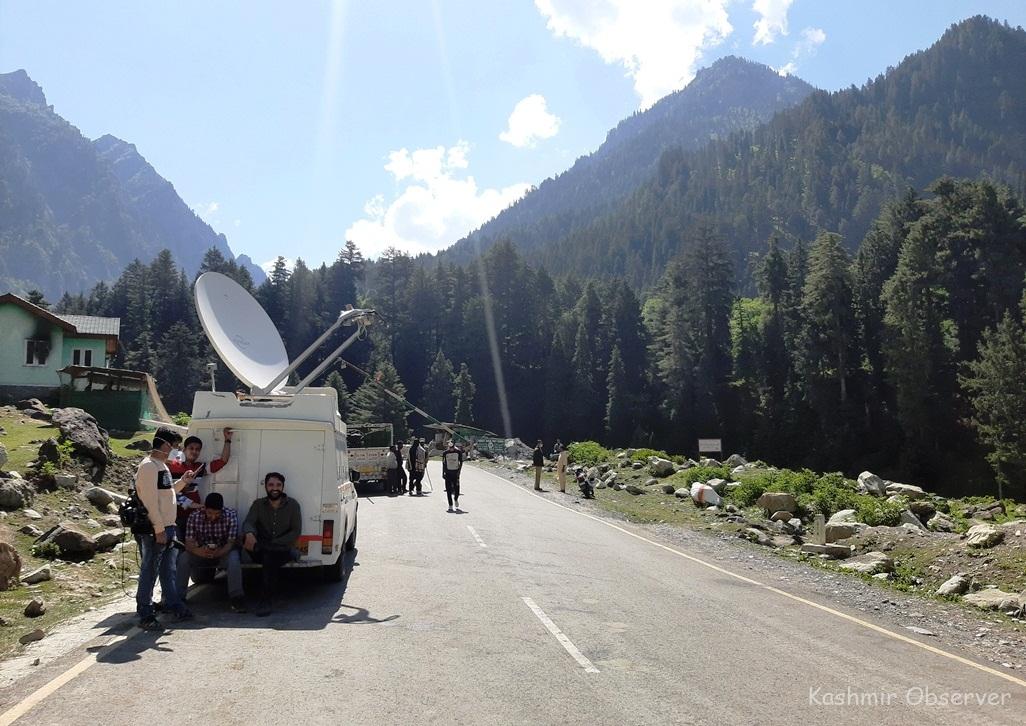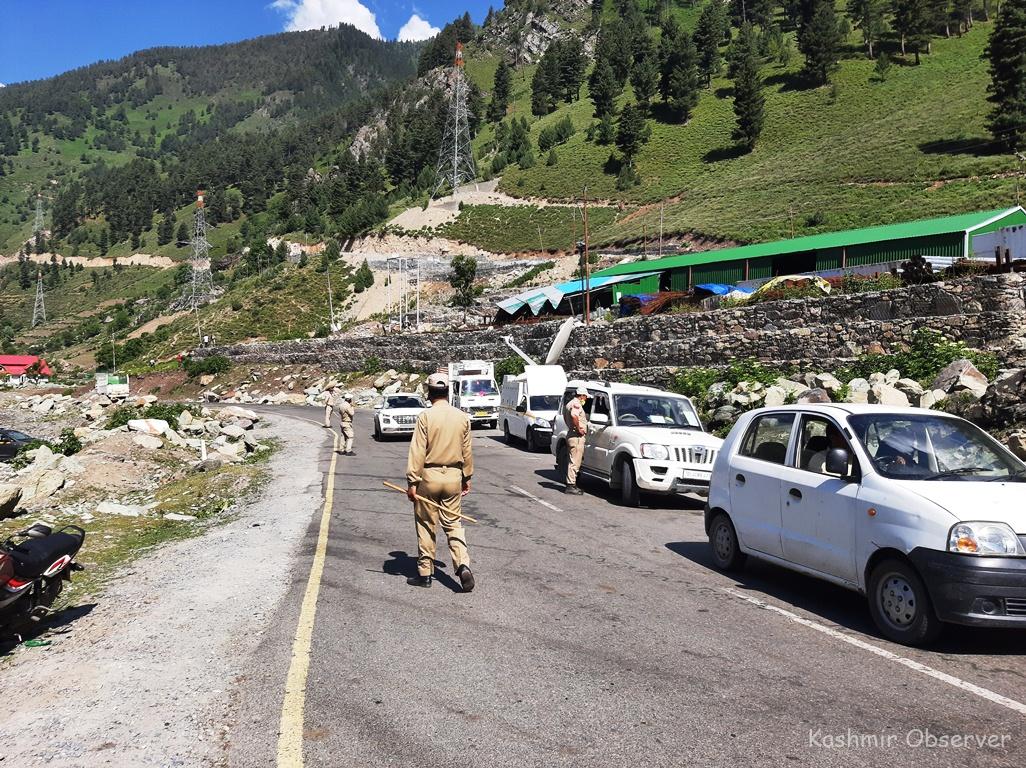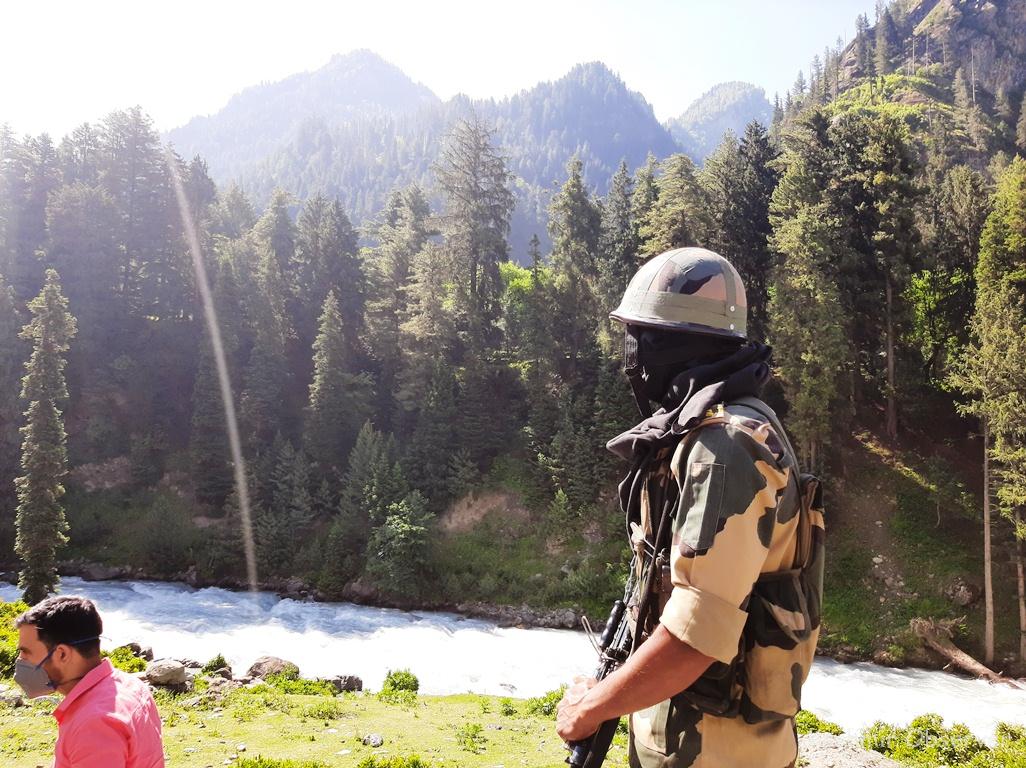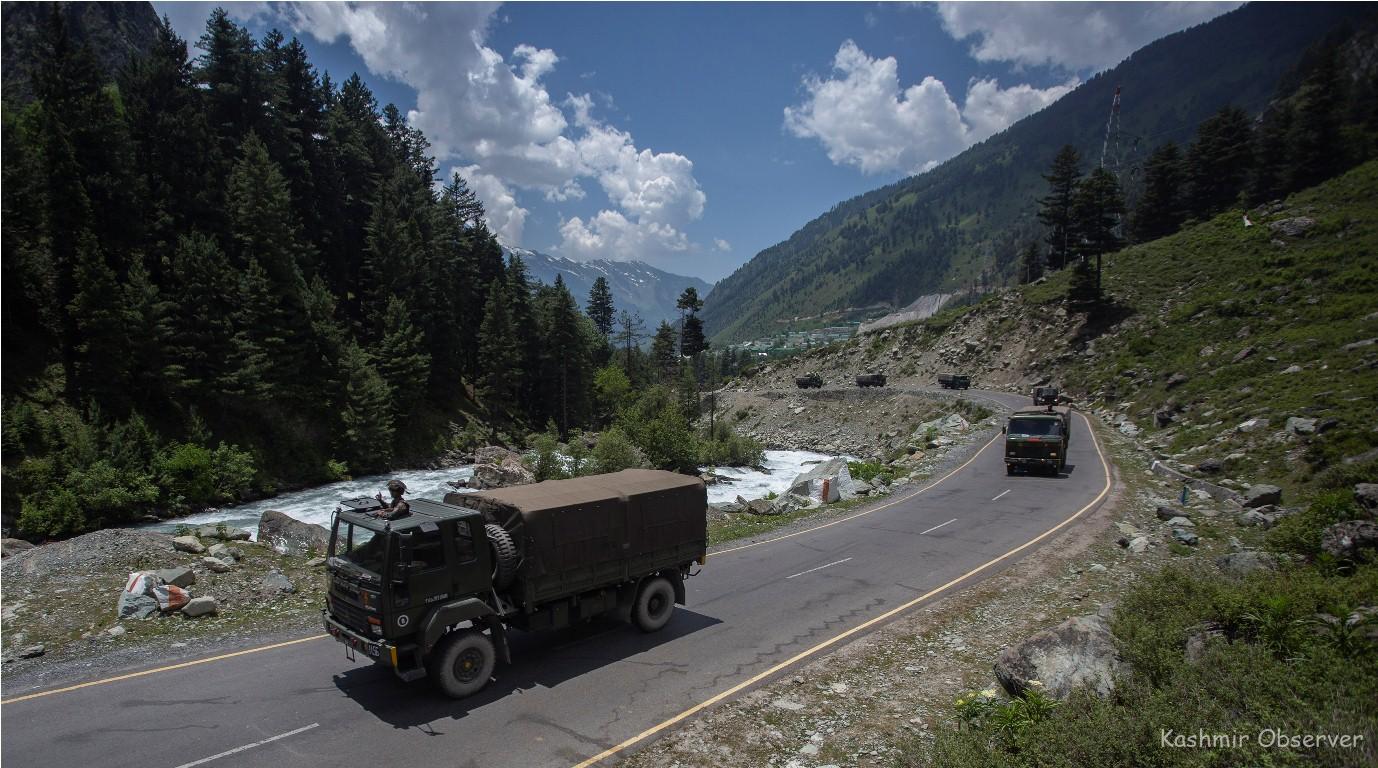
Hours after the Galwan Valley’s violent clash left 20 Indian army men dead, a battery of reporters hit the Ladakh road to cover one of the biggest stories in the world right now. Barred and pushed back, they ended up reporting the seething showdown at the banks of the pristine water body instead.
GAGANGEER, Sonamarg – Wind that swept from the sweltering side of the Sind Valley created flutters, as a bunch of chary cops hawked the highway leading to Ladakh. They invoked some official orders to check the media movement towards the Galwan Valley — the confrontation zone where Indian Army and People’s Liberation Army of China lately locked horns over the bloodcurdling clash.
To report the ground mood in the cold desert, a media corps from Srinagar drove towards the rugged terrains on June 17, but they were cut short at picturesque Gagangeer area and forced to return to their bureaus.

While some waited and vainly tried numbers for intervention, a military convoy made its way towards the other side.
In times of LAC faceoff, the routine highway military movement caught everyone’s attention, so did some sidewalk pickets overlooking the enthralling Sind water body.
There was, however, no death-defying in the air — until cops on duty pressed the command.
“Stopped on our way to cover an important Ladakh story, we were told by cops at Gagangeer that journalists aren’t allowed beyond this point,” Mir Fareed, bureau chief of Times Now told Kashmir Observer.
“It was futile to even ask and argue why journalists should be stopped from discharging their duties.”

Mir like his colleagues ended up reporting one of the high-voltage escalation events at the Line of Actual Control from Gagangeer itself.
The ongoing Sino-India standoff escalated at night hours of June 15, when over twenty Indian Army personnel, including a Colonel, were killed in the clash with PLA in the Galwan Valley.
New Delhi media has already reported some grotesque details—“Chinese death squads hunted down Indian troops in savage execution spree”—about the nocturnal encounter in the contested valley which Beijing now claims in its entirety.
It proved to be the biggest military confrontation between the armies of the two most populous nations in over five decades. They had last traded guns in 1962.
New Delhi reacted sharply, with Prime Minister Narendra Modi saying “India can give fitting reply when provoked”.

Following the fierce clash, Zubair Dar, who works with Voice of America went to cover the biggest news. After waiting for hours at Gagangeer, he returned to Srinagar.
“Commercial vehicles were allowed to move on,” Dar said, “but media-persons were stopped for reasons best known to officials.”
When Kashmir Observer contacted some concerned police officials, they cited the COVID guidelines and travel passes as the reason to stop some Ladakh-bound passengers.
“Srinagar – Kargil NHW is open for vehicular movement,” Khalil Poswal, SSP Ganderbal, tweeted. “Only Covid-19 protocol for Inter – UT movement is essentially required to be adopted.”
But the debarred journalists said authorities seem in no mood to allow media to cover the Ladakh faceoff.

“I approached all the officials from Ladakh, to Jammu and Kashmir to avail the movement pass,” said a journalist working with an International organization. “But unfortunately, there was no response from anybody.”
The miffed media persons said their professional work is suffering due to the “growing non-cooperation” from officials.
@DvCom_Secretary #Ladakh. I wonder how come reporters arriving from Delhi via flights to #Leh are #Corona free and no #Covid protocol for them as compared to reporters from #Kashmir awaiting permission to move towards Leh since many days now.
— Irfan Quraishi (@irfanquraishi85) June 17, 2020
“They should tell us the proper way to avail permission,” a scribe who returned from Gagangeer said.
“Transparency in times like these is important for everyone. Media is not here to escalate tensions. That’s not our job. While some officials and officers think of us as a part of the problem, they should also realize that in times of fake news and propaganda, the ground reporting is needed.”

While returning to their Srinagar bureaus, some of the journalists working for local, national and international media organisations talked about their exhaustive trips on the highway during the summer war of 1999 in Kargil.
“These are strange times,” said a senior journalist. “Back then, officials would arrange media briefings in Kargil itself. But now, we’ve been left out of the scene. And this is precisely why this LAC standoff is becoming a subject of speculations for everyone today.”
Follow this link to join our WhatsApp group: Join Now
Be Part of Quality Journalism |
Quality journalism takes a lot of time, money and hard work to produce and despite all the hardships we still do it. Our reporters and editors are working overtime in Kashmir and beyond to cover what you care about, break big stories, and expose injustices that can change lives. Today more people are reading Kashmir Observer than ever, but only a handful are paying while advertising revenues are falling fast. |
| ACT NOW |
| MONTHLY | Rs 100 | |
| YEARLY | Rs 1000 | |
| LIFETIME | Rs 10000 | |











